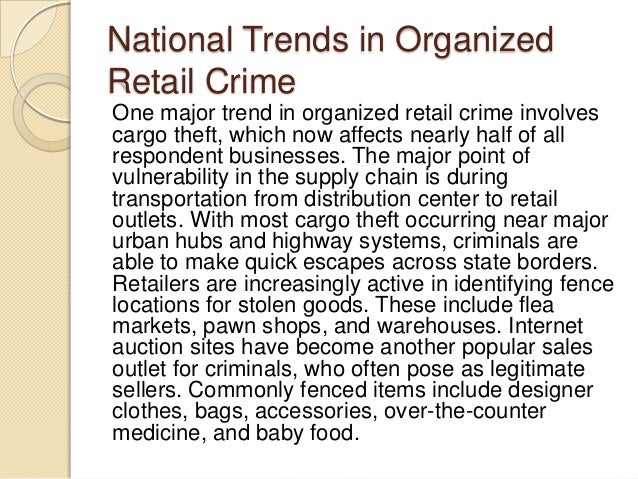El Chapo'S Legacy: Understanding Current Trends In Organized Crime

The world of organized crime is ever-evolving, with figures like Joaquín "El Chapo" Guzmán leaving indelible marks on its landscape. His arrest and subsequent imprisonment did not eliminate the complexities associated with drug trafficking and organized crime. Instead, they have transformed, reflecting broader trends that continue to shape illegal activities today. This article explores El Chapo's impact on organized crime trends, examines current developments, and speculates on the future of criminal enterprises.

Introduction to Organized Crime
Organized crime refers to criminal organizations that systematically engage in illegal activities for profit. These groups often operate in secrecy, utilizing networks to traffic drugs, weapons, and even people. The significance of organized crime cannot be overstated; it undermines legal systems, destabilizes countries, and poses substantial challenges to law enforcement. El Chapo, as a notorious drug lord, embodies the complexities of organized crime, providing insights into how such operations function and evolve.
The Legacy of El Chapo
El Chapo's reign as the leader of the Sinaloa Cartel marked a pivotal period in drug trafficking. He revolutionized the way cocaine, heroin, and methamphetamine were distributed across borders. His innovative use of tunnels, drones, and bribery set new standards for organized crime operations. According to the DEA, the Sinaloa Cartel accounts for nearly a third of the illegal drugs entering the United States, a statistic that highlights El Chapo's profound impact on drug trafficking.
Real-world examples of his influence are evident in the rise of decentralized networks following his capture. While El Chapo was imprisoned, rival cartels adapted by using more sophisticated methods, including digital currencies and encrypted communication. These developments showcase how his legacy continues to shape organized crime trends.

Current Trends in Organized Crime
As we look toward 2025, statistics reveal shifting dynamics in organized crime. Reports indicate a surge in fentanyl trafficking, with the DEA noting a 300% increase in seizures since 2015. This potent opioid, often mixed with other drugs, has led to record overdose deaths, emphasizing the urgency of addressing these trends.
Moreover, the rise of transnational crime syndicates has become increasingly prominent. Groups are now collaborating across borders, driven by financial incentives and technological advancements. For instance, the recent arrest of members from the Jalisco New Generation Cartel in Europe illustrates the global reach of organized crime.
Understanding these current trends is crucial for law enforcement and policymakers as they strategize to combat these evolving threats.
Impact of Technology on Crime
Technology has transformed organized crime operations, making them more sophisticated. The use of the dark web for illicit transactions has surged, allowing criminals to operate anonymously and evade law enforcement efforts. Furthermore, advancements in communication technology enable real-time coordination among criminal networks.
For example, encrypted messaging apps are commonly used by drug traffickers to coordinate shipments and avoid detection. Law enforcement agencies are increasingly challenged to keep pace, adapting their strategies to counter these high-tech operations.

These technology-driven trends highlight the ongoing evolution of organized crime, reinforcing El Chapo's legacy as a catalyst for change.
Law Enforcement Responses
In response to these challenges, law enforcement agencies have ramped up their efforts to combat organized crime. Strategies now include enhanced intelligence-sharing between countries, specialized task forces, and the adoption of advanced technologies for surveillance and tracking.
However, obstacles remain. Corruption within law enforcement can significantly hinder efforts to dismantle powerful organizations. For instance, high-profile cases in Mexico have revealed how bribery can compromise investigations. Thus, collaboration between agencies and the public is essential to overcome these challenges.
Addressing organized crime requires a multifaceted approach that considers both the legal and social implications of these criminal enterprises.
Conclusion
El Chapo's influence on organized crime trends is profound, shaping both the methods used by criminals and the responses from law enforcement. Current trends, such as the rise of fentanyl and the integration of technology, underscore the complexity of organized crime today. As we move toward 2025, understanding these dynamics is essential for developing effective strategies to combat illegal activities.
As we reflect on El Chapo's legacy, it becomes clear that the fight against organized crime is far from over. Continued vigilance, innovation, and collaboration are crucial for law enforcement and society to navigate this challenging landscape. To stay informed about these critical issues, consider following developments in organized crime and contributing to discussions on effective policy interventions.